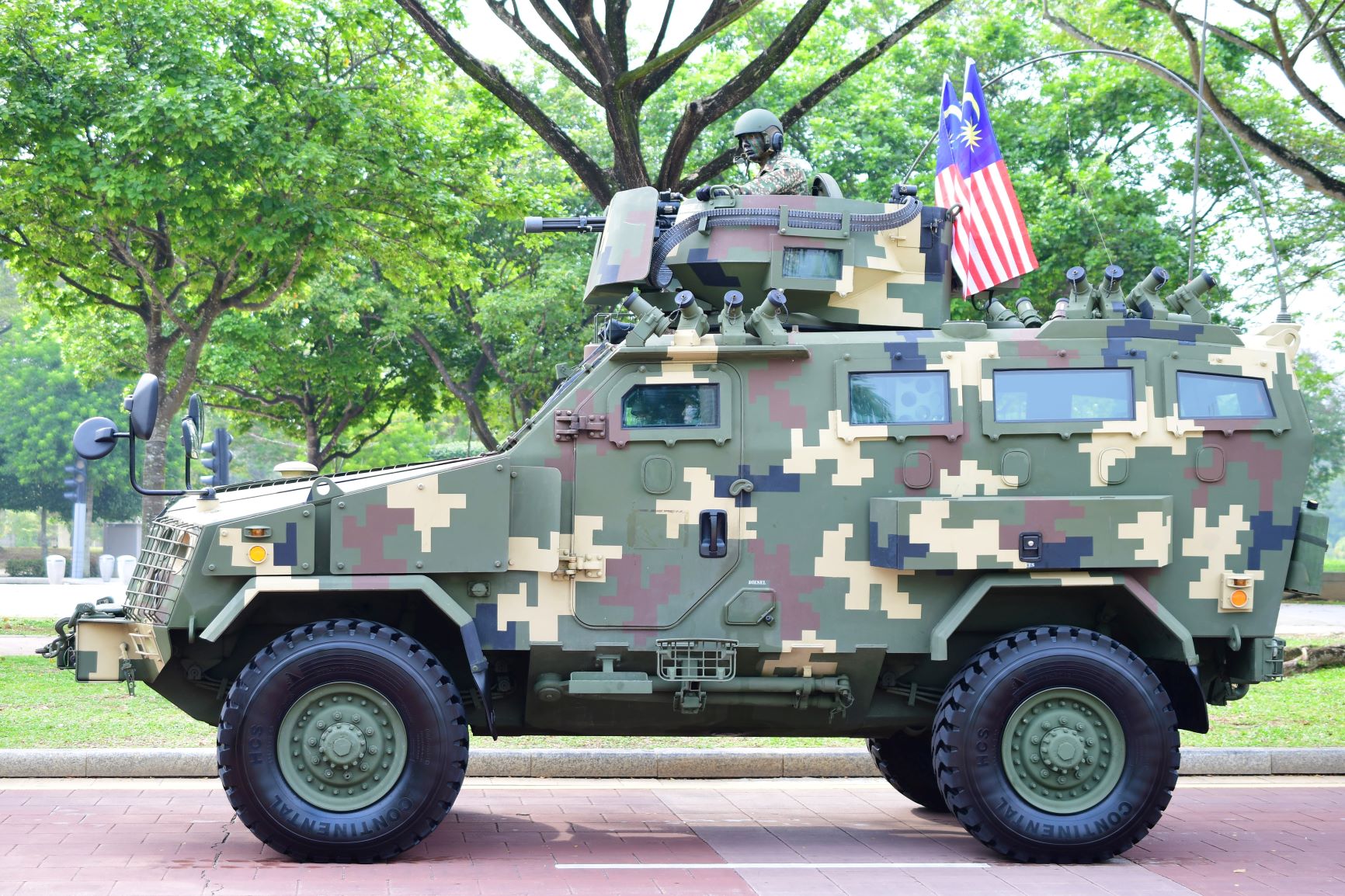
SHAH ALAM: Only one KJA programme. In a previous post I wrote that there was a possibility that the Army would embarked on two Kenderaan Jenis A (armoured vehicles – KJA) in the near future or even mixed them together. The programmes are the 6X6 – basically the Condor replacement – and High Mobility Protected Vehicle (HMPV).
I have been told however only the 6X6 is expected to be approved and funded for the near future.
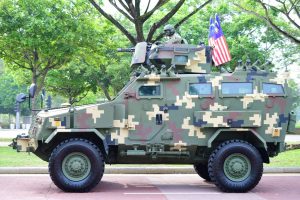
A Lipan Bara likely from the Armour School in Port Dickson at the Merdeka 2019 rehersal day.
This means the Lipan Bara will remained the sole HMPV in service in the Army for the foreseeable future. Of course, another HMPV, the IAG Guardian, six of them are in service with the Malaysian contingent in Lebanon, though that’s another issue altogether.
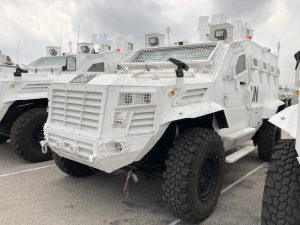
IAG Guardians of the Malaysian contingent in Lebanon.
It must be noted several companies had already lined up their candidates for the HMPV programme. I am not sure whether they will be able to lobby to the government to have another look at it, once the 6X6 programme has been completed.
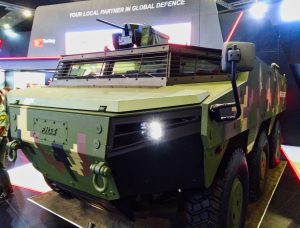
PARS 6X6 APC
As for the 6X6 I am told that the requirement is for some 200 vehicles with another 50 or so for use by the Unifil mission and the army’s ready battalion, also meant for UN peacekeeping missions. The 6X6 is mostly for the units currently equipped with the Condors namely for Kor Armor DiRaja. Funding is expected in the next RMK period.
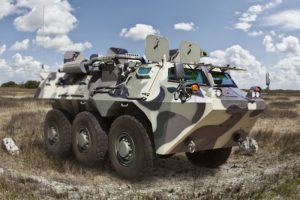
Pindad Anoa.
I am told that the evaluation for the 6X6 has already started and the results will be used for the open competition. It is unclear however whether the 6X6 not included in the evaluation could be selected in the tender. On paper an unevaluated vehicle could trumped the ones already evaluated especially on the price.
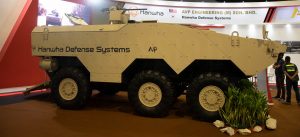
Hanwa Tigon 6X6 APC
– Malaysian Defence
If you like this post, buy me an espresso. Paypal Payment

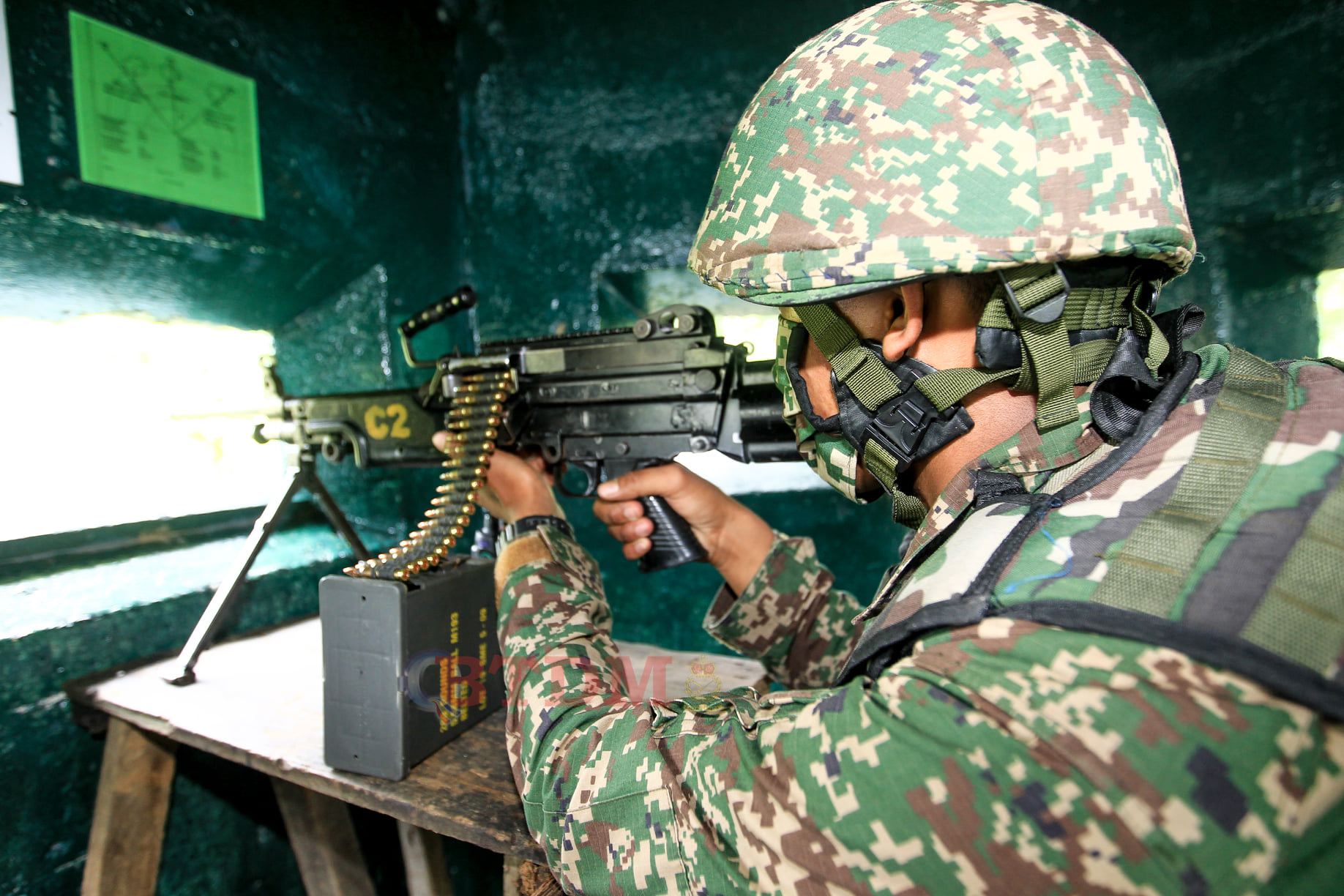
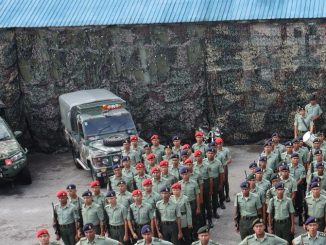
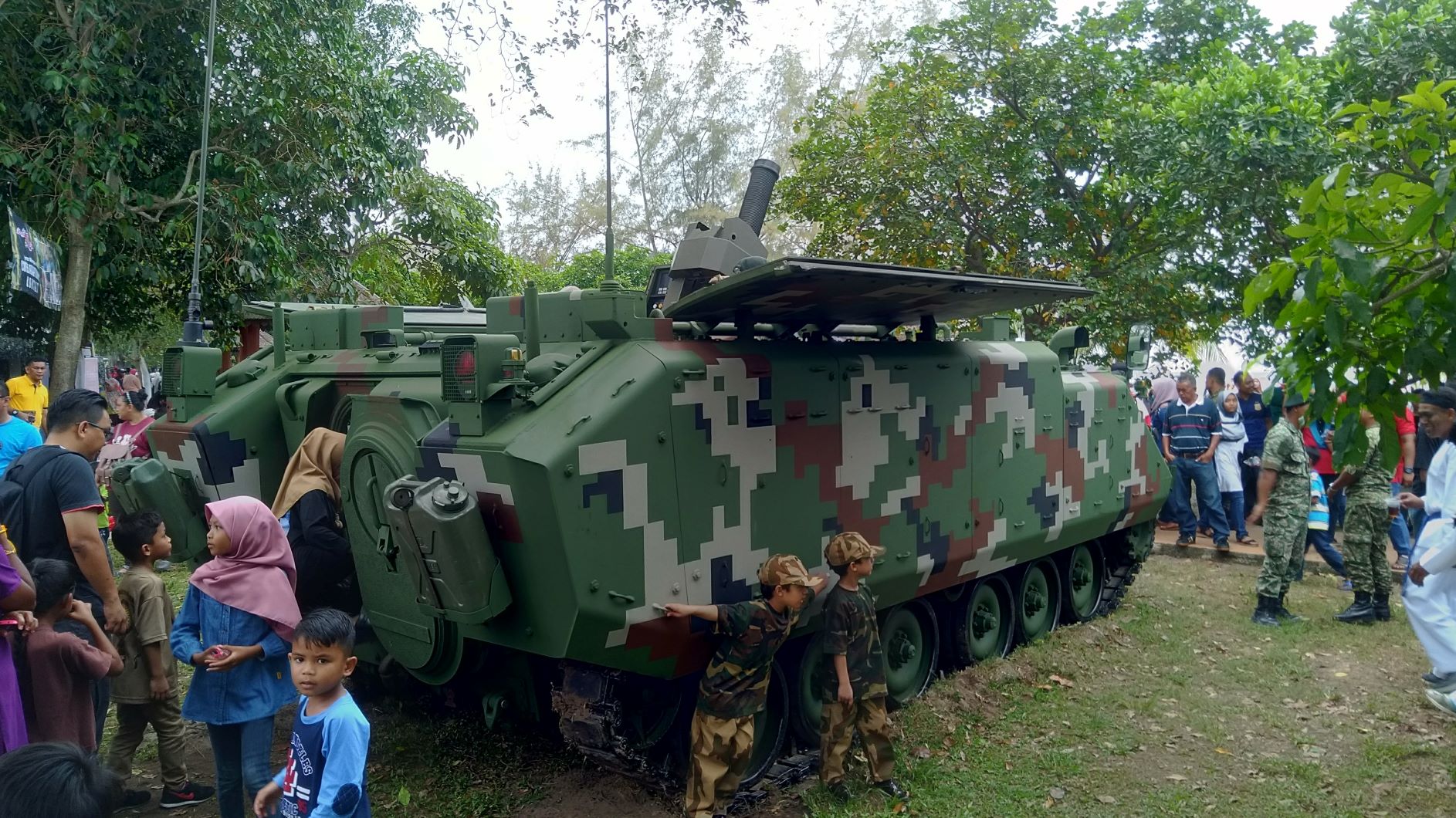
Q: Why need 6×6 when already have 8×8?
Reply
KAD requirement as Condor replacement programme. The Gempita was bought to fulfil different requirement
So we will getting about 250+ new 6×6..what a good news 😀
Realistically the condors was used in Kor Armor Diraja (KAD) armoured cavalry regiments as an armoured recce and fire support vehicle, armed with 20mm cannon or twin GPMG as a supplement to the SIBMAS armed with 90mm cannon. In KAD armoured cavalry regiments, they use a mixture of SIBMAS 90mm AFSV and Condor APCs. Right now, the SIBMAS is being replaced with the Gempita AFV30 with 30mm denel camgun and Gempita LCT30 with 30mm denel camgun plus INGWE anti tank missiles.
An example with twin GPMG
https://www.malaysiandefence.com/wp-content/uploads/2011/09/condor.jpg
Currently KAD has 4 armoured cavalry regiments
4th Royal Armour Corps (Penrissen Camp, Kuching, Sarawak)
3rd Royal Armour Corps (Lapangan Terbang Camp, Sungai Petani, Kedah)
2nd Royal Armour Corps (Sunggala Camp, Port Dickson, Negeri Sembilan)
1st Royal Armour Corps (Batu 10 Camp, Kuantan, Pahang)
Of these, from open sources all except for 4 KAD has started the transition from SIBMAS to the Gempita.
So what is armoured cavalry? Armoured cavalry are combat units using armoured fighting vehicles (AFVs) instead of horses. They began to replace horse cavalry as the reconnaissance, screening and exploitation/pursuit arm in most armies after the First World War, although many armies continued to maintain horse cavalry through the end of the Second World War
A 6×6 armoured vehicle of course can do what the condors had done before. But what about using a smaller, nimbler vehicle, with the same or better armour protection than the 6x6s, while also being cheaper?
Personally I am inclined to replace the Condors with J-LTV. It has high armour protection, as much as a normal MRAP; very agile and maneuverable off road and can sustain high speeds over rough terrain; during tests it has proven to have a high mean time between failures; and importantly a low cost of around USD 350k per vehicle.
For the equipment of these J-LTV for KAD, I am proposing to have 4 basic variants
– general purpose (GP)
– Heavy weapons carrier with 0.50 cal M2 HMG (HWC)
– recce with VINGTAQs. This will be fitted with VINGTAQs that is supposed to be fitted to Gempitas. Those Gempitas will be converted to command variants.
– ambulance
http://hips.hearstapps.com/pop.h-cdn.co/assets/17/21/1495822778-jltv21.jpg
I would suggest each of the armoured cavalry regiments to consist of
24 Gempita IFV30
12 Gempita LCT30
4 Gempita Command
2 Gempita ARV
2 Gempita Maintenance
34 J-LTV (12 HWC, 6 VINTAQS, 12 GP, 4 ambulance)
Harap av6 menang 👍👍
Why 6X6?
Reply
It’s the Army requirement
Why need to reinvent the wheel? Just get PARS 6×6 and be done with it, and without the usual high expense of ToT and localisation, and Malaysian customised configurations. The AV8 has pretty much covered all the configs that we could have, so its just a matter of adapting to the smaller 6×6 chassis.
The R&D cost has sunken in, let’s make full use of that.
With MPA, UAV, LCA, and now new 6×6, I hope all this plan going smoothly into reality to strengthen our ATM.
And not to forget MRSS.
Syabas Malaysia.
Before we get to hot under the collar about the best 6×6, does anyone know which ones the army has been testing?
Then it comes down to cost.
Oman 172 Pars III 8×8 and 6×6 costs USD500 million
http://www.defaiya.com/news/Regional%20News/Oman/2017/08/01/fnss-delivered-first-8×8-pars-iii-apc-to-oman
Lithuania is buying 500 J-LTV for USD170.8 million
http://www.janes.com/article/90801/us-approves-possible-jltv-sale-to-lithuania
I only have one wish. Refurbish the commando, Sibma n Condor to the Askar Wataniah n border Regiments
Reply
Unfortunately there isn’t enough money to do that
I see anoa pindad picture.
Really?
We could follow what the french army is doing and field literal battle taxis in lieu of its 8×8 IFV. They’re going for VBMR for generalized troop transport while VBCI is paired with Leclerc MBT for expeditionary role
I am curious, where or what is it that 6×6 is better than 8×8?
Reply
Its smaller so in theory it would be cheaper to buy and operate. Other than that…
Even if it was there was any value in refurbishing the 40 odd year old V-100/50s, they’re aren’t any to refurbish : the majority have long been sent to scrapyards ….
As for the Condors and Sibmas; before refurbishing them; just because we can or for the sake of doing so; we first have to identify the type of roles we see them performing; even if transferred to TA Border Regiment units. As resupply vehicles or for general transport/patrolling in a low threat environment (has to be very “low threat” given that both don’t even have all round protection from 7.62mm AP)? A point can also be made that TA and Border Regiment units in the long run will be better off with MRAPs (despite the outlay needed); newer and more mobile than the Condor and Sibnas.
The amount spent on an upgrade has to be seen in relation to the numbers of years we intend on keeping them in service and whether the whole exercise is a good return of investment in the long run. One would also not be wrong in saying that retiring both types cuts down the varied number of vehicles (armoured and soft skin) that the army has to maintain.
@ lee yoke meng
Of the 3, i believe the condor would be the best candidate for a full reset programme. No capability upgrades, just all new engine, transmission and axles; plus better airconditioning system.
Probably joe can better talk about how much that would cost. It could probably be upgraded with the latest Mercedes Unimog U4000 components, as the condor is basically a unimog with an armoured shell. If it can be done around rm300-500k, IMO it would be okay. BTW Deftech actually went on record to say that its proposed condor upgrade would cost 50% of the lipanbara. The lipanbara costs RM7 million each. So the condor upgrade was to cost RM3.5 million each. Compare that to the cost of a brand new J-LTV, USD350k or RM1.47 million each.
@Lee Yoke Meng
Condors doable, Commando nope, Sibmas nope. As… have pointed out, Condor uses off the shelf Unimog drivetrain, and in theory could be upgraded to the latest specs but Unimog much like Land Rovers and G-wagens nowadays are much more expensive than back when they were originally used. The cost of limited upgrade could still be higher than buying JLTV as mentioned by ….
As for DEFTECH upgrade cost, it could be lower if they just replace engine & refurb the axles and suspension doing away with the intake & exhaust relocation. BUT if it requires rewiring the entire vehicle, its gonna cost upwards much more.
However, if after the end of AV8 program and there’s no new projects, I am of the opinion its better to give DEFTECH the go ahead and relife the Condors, inspite of the higher cost (which can be nego). This would keep jobs flowing for some years looking at the many Condors we have. The Condors are still useful as 2nd line battle taxis (as long they don’t get into pitched battles), and at least Border troops have something better than Hilux.
@dundun
There was a discussion about this before so no point to rehash but in summary the French Armee operates on a different doctrine compared to other conventional armed forces, hence certain vehicle types are superfluous for their usage. Whether this is the right or wrong direction, no one can tell for sure.
I am quite excited. Has anyone got any idea which 6×6? Is the Tigon in the running?
Reply
The pictures in the post is an indication of what is being looked at currently
@ joe
Actually for DEFTECH, the best thing for them is not AV6, condor refurbishment or others.
IMO the best thing for DEFTECH is for the government to buy a batch 2 for the AV8 Gempita. To have around 168 more Gempita of mostly IFV25 variant, to create a fully gempita equipped mechanized brigade (aka our own stryker brigade).
The reason why I prefer J-LTV is for the budget to be freed to buy the Gempita AV8 batch 2. So IMO no 6×6 KJA = budget freed to buy 168 more AV8 gempitas.
I believe the budget to get 250 6×6 KJA can easily buy the additional 168 Gempitas + around 200 J-LTV. IMO additional 168 gempitas + 200 J-LTV gould give a bigger operational advantage than just buying 250 6×6 KJA.
This will give us:
– 1 mechanized brigade (3 mechanized battalion + 1 armoured cavalry regiment) armed with Gempita AV8 (plus J-LTC in the armoured cavalry regiment)
– 3 more regiments of armoured cavalry equipped with gempita AV8 and J-LTV
Just buying the 6×6 KJA will only benefit the armoured cavalry regiments. And we will end up with a mechanized brigade with a mix of tracked and wheeled IFVs (so we cannot fully exploit the strengths of both types of IFV)
@ marhalim
The ADNAN and MIFV upgrade is under development budget or operational budget?
Reply
Likely from OE
As someone who live and work in pekan..I do hope our current govt put aside political consideration to keep deftech pekan running..Sure Deftech got involved in some scandal this year but to jeopardize the live of hundreds cuz of some 2 or 3 people is not right..As for 6×6 candidate..Im not really an expert
Do you think Pars and Deftech might be on the outer because it is in Pekan, Najib’s constituency?
Reply
Not only that but the arrests of two of its executives were not good for the company. I was told that the case is KIVed though
Interesting article on the thailand armoured vehicle industry
http://www.shephardmedia.com/news/landwarfareintl/ds-2019-armoured-vehicle-production-grows-thailand/
Interesting take from this
Chaiseri First Win costs about USD500k each. Well it is a big gap compared to what we paid for the lipanbara. The price is comparable to other MRAPs of its size. For example the australian Bushmaster (IMO a better design than the First Win), costs Australian Dollar 500 thosand each.
For chua, a fully comprehensive V-100/150 commando upgrade is done by panus as thr AFV-420P. Costs USD834k. Is that value for money? I would put my money on 2x new J-LTV rather than that.
Panus has also designed their own 8×8 IFV, called the R600. It cost USD2 million. Looking at the overall design, it is a commendable effort, but i can see a number of questionable design choices for the R600.
Incredibly, all of this is done by thai private sectors with their own money.
I really hope that the AV8 and the GOWIND programme is spared from political issues and be continued for batch 2 for national security sake.
BTW on the deftech condor upgrade, if compared to the panus commando V100/150 upgrade, the upgrade cost of both is almost the same (RM3.5 mil vs USD834k). You can say in this case it is not cost effective to upgrade when compared to buying new.
if the army truly needs the 6×6, better to go with the gempita 6×6 version. Im sure in terms of maintenance and logistic it would be easier and cheaper.
Arguments for giving filler work for Deftech pekan is similar to the argument on giving the same kind of work for Boustead. At the end of the day, will it contribute to the national economy or will it cause a deadweight loss to GDP?What if instead of paying RM 7 million for each rebadged Chaiseri First Win, we just pay US$ 500,000 and use the rest of the money to increase the BSH payouts, which will also result in multiplier effects for the national economy. I say go for more Pekan-assembled First Wins, but not at current extortionate prices. If Deftech refuses to play ball, introduce competition such as the JLTV through another assembler like Weststar, which would be even cheaper.
Reply
Note the MY version of the Lipan Bara is the Mark II version of First Win, it is 12.5 tonnes compared to the 9. 5 tonnes of the original one likely the one which is quoted at USD500,000. Furthermore Deftech paid for the IP of the vehicle so the procurement cost includes that.
@…
While building new is best for DEFTECH, I wonder would there be anymore after AV8. The AV8 production is going to end by next year and if they don’t get the 6×6 program or it comes too late, they will lay off people. Simple as that. So IMHO even if the cost of upgrading Condors is more than buying new (which likely won’t come at the price you quoted), I am all for it just to keep jobs going until we get new 6×6 or 4×4 program.
Another thing, if TDM has identified the need for a 6×6 IFV, I am reconsidering whether getting more AV8s is what they really need. I am guessing that after working with AV8s they might have found some limitations with the 8×8 platform and would like something with similar level of performance but in a smaller chassis. I am thinking its because of this vehicle type usage for urban warfare environment, where maneuvering the 8×8 in KL/JB could be a challenge which the 6×6 would fare better.
Cost-wise though, I concur with you that its better to stay with just the 4×4 and 8×8 platforms. The 4×4 HMPV(AV4, JLTV, etc) is lighter and more maneuverable than the 8×8 IFV and if they cannot handle the situation, that’s where the AV8 comes in. IMHO Its nor necessary to have a 6×6 type vehicle that would basically overlap the roles of the 4×4 HMPV and 8×8 IFV, but I am guessing the TDM doesn’t share that view.
@Firdaus, Tom Tom
If the Government do go ahead with the 6×6 program (and/or Condor relife as I suggested), certainly its a big carrot to be dangled in front of Pekan voting constituents. So to Pekan folks, if you want to keep jobs there you know what to do in next election. The old lion king cannot protect you anymore. Long live the new lion king.
@ joe
Remember this 6×6 requirement is to equip the armoured cavalry regiments in the KAD, plus additional units for UN missions. My suggestion for additional AV8 is mainly not for KAD, but actually to create/reequip 2 new mechanized infantry battalions with the AV8. Why? To create our own version of the Stryker Brigade, say named the Gempita Brigade.
What is a Stryker Brigade? The Stryker brigade combat team (SBCT) is a US Army motorized infantry force structured around the Stryker eight-wheeled variant of the General Dynamics LAV III. A full Stryker brigade was intended to be C-130 Hercules air transportable into theatre within 96 hours.
So what is my aim for the Gempita Brigade? To be a brigade with 3x mechanized infantry battalion plus 1x armoured cavalry regiment all equipped with AV8 Gempitas. To be deployable as a complete brigade by road without the need to use heavy transporter trailers to any point in Army Field Command West area (Peninsular Malaysia) within say 48 hours. So we would have a complete wheeled mechanized brigade.
So what would happen to the adnans/mifvs? These are to be transferred to a new brigade together with PT-91Ms to create a fully tracked armoured brigade. Isnt it good to have 1 fully wheeled mechanized brigade and 1 fully tracked armoured brigade? Or you would still prefer 6×6 option?
So IMO getting additional AV8 + J-LTV will give greater operatioal impact than getting 6×6 KJA.
“Sure Deftech got involved in some scandal this year but to jeopardize the live of hundreds cuz of some 2 or 3 people is not right.”
Ultimately this is another way of saying that the needs of the armed forces must come after those of local industry, and it follows that the lives of our soldiers will also come second. Every ringgit that we pay for a more expensive item to be produced locally is one that can be better spent elsewhere.
“I do hope our current govt put aside political consideration to keep deftech pekan running..”
Battlefield effectiveness, national defence and national survival are not political considerations.
“Furthermore Deftech paid for the IP of the vehicle so the procurement cost includes that.”
Nobody asked Deftech to do that, but they went ahead expecting that the government would select and buy their vehicles for the armed forces.
AM – “Ultimately this is another way of saying that the needs of the armed forces must come after those of local industry”
Indeed. As I keep saying : the needs of the local industry must not override the needs of the end user. Unfortunately this has long been happening and as a result the end user doesn’t get the desired capability and the tax payer his/her ringgit’s worth …
AM,
If for whatever reason the army has decided it needs a 6×6 so be it. The trick would be to maintain as much commonality with what we presently operate and hopefully the army will have a bigger say in actually influencing what gets selected and the components specified.
With the Adnan and AV-8 it wasn’t the army which has a big say selecting what got ordered and what went on the vehicles – it was national interests that determined things. If we get the Anka would it be based on technical merits and other factors or based on the need to benefit the local
industry? The Deputy Defence Minister spoke of a revamp in how we go about our procurement; let’s hope something tangible and positive actually results from this.
@ azlan
” If for whatever reason the army has decided it needs a 6×6 so be it ”
We really need to look at the bigger overall picture. Is getting the 6×6 really going to substantially increase our operational capability? 250+ 6×6 will have a significantly high cost compared to 4×4 like J-LTV. Heck the J-LTV costs even cheaper than upgrading the condors!
So for probably the same amount of money to get 250 6×6, i believe that getting 160+ AV8 gempita in mostly the IFV25 variant, plus 250 J-LTV will give the army a substantial increase in operational capability. We could then have 2 fully mechanized brigades, one fully tracked and one fully wheeled. Getting the 6×6 will only give us replacements for condor in the KAD, which the tasks and functions IMO can be done by something like the J-LTV at significantly lower cost.
…. – “We really need to look at the bigger overall picture. Is getting the 6×6 really going to substantially increase our operational capability”
I did have the “bigger picture” in mind. I have taken into account that the army has good reasons as to why it wants 6x6s and has thought of how the 6x6s will complement existing assets and not overlap existing capabilities. The question is how the 6x6s will be fitted out (if financial realities dictate they mostly be armed with HMGs and GPMGs then they dint bring much in capabilities), how they will be organised and how they will be used in certain operational circumstances in a more effective and practical manner compared to the 8x8s? A pertinent question is also when did the army decide on 6x6s?
@ azlan
On the 6×6
https://www.malaysiandefence.com/another-kja-programme-or-two/
Marhalim said to 1st wrote about the 6×6 in 2006. The 6×6 is planned as the replacement for condors in armoured cavalry regiments in KAD. The condors are used for 2 different roles in the army, 1 with mechanized infantry regiments (in 3 battalions, now totally replaced by adnan and gempita), another with the armoured cavalry regiments (4 regiments) in a mix with SIBMAS AFSV. So basically the 6×6 is for the replacements of the remaining condors of KAD.
So what is the primary function of armoured cavalry regiments when it was equipped with SIBMAS AFSV and Condors? I think you could eleborate about this better than me. What i could think of:
– to give fire support to infantry units
– convoy escort and protection
– armoured recce
Now the SIBMAS has been replaced by the Gempita LCT30 and AFV30 variants. The question is what kind of function do you want from the condor replacement? What kind of mission it has to excel at? What kind of armament should it be equipped? Is a 6×6 really critical for the mission? Or actually can it be fulfilled better with 4×4 platforms such as the J-LTV?
http://www.sott.net/image/s24/492570/full/8_1_1024x682.jpg
…, – “Getting the 6×6 will only give us replacements for condor in the KAD, which the tasks and functions IMO can be done by something like the J-LTV at significantly lower cost“
Whatever 6×6 is bought may be a replacement for the Condor but it will contain a number of advantages over the Condor.
I really don’t have an opinion on the J-LTV but it would be unsurprising that it can do some of what a 6×6 can (depends entirely on the operational circumstances) but then ultimately one is an armoured fighting vehicle and one isn’t (both with respective merits and both more ideal than the other in specific conditions) ; same reason why one is cheaper than the other …
@…
bro you’re hilarious, you sound like a sales agent the way you bring up j-ltv in every single comment on posts related to ground vehicles. I’m sure it’s a good vehicle but just the way you slide it in every single time HAHAHA.
4×4, MRAP, 6×6 and 8×8 are complement to each other. Better the army has them all in their inventory. It is up to their judgement how and when going to use the vehicles.
Every type of vehicle has their advantages in cost and function. If not then no factory will produce them all.
@ neb
I am no salesman. Just a realist who wants the best for the army.
If i am a JLTV salesman, i would not also want the army to buy batch 2 of Av8 Gempita.
JLTV costs less than USD350k each, while able to do tasks of vehicles costing millions. Buy them through FMS, no need middlemen.
I want in 10 years time, the army will have a fully armoured division. Spending lots of money to have a 6×6 replacement of the condor wont acheive that aim.
Give d Adnan n mifv upgrade work 2deftech while we buy d pars or tigon directly from turkey or Korea . Since we didn’t have any economy of scale better this way.
….. – “What i could think of:
– to give fire support to infantry units
– convoy escort and protection
– armoured recce”
That’s basically it. Of course on rare occasions during the 2nd Emergency Ferrets and V-100/50s were also placed at checkpoints and other places as static defence or as QRA.
…. – “ Or actually can it be fulfilled better with 4×4 platforms such as the J-LTV?””
One is a AFV, one isn’t. Depending on the circumstances both will be a more practical option at times. The J-LTV in restricted terrain or in certain other conditions will be more mobile/agile. What we really should be asking is in what conditions would a 6×6 be a more practical or effective solution compared to a AV-8?
… – “. So basically the 6×6 is for the replacements of the remaining condors of KAD”
Indeed but it will have better mobility and protection. If fitted out with a 25mm or with OWSs; it will be in a better position to deal with other IFVs and to provide suppressive fire to infantry. It remains to be seen how the 6x6s are fitted out.
@ azlan
” What we really should be asking is in what conditions would a 6×6 be a more practical or effective solution compared to a AV-8? ”
IMO that is not the correct question to ask for the 6×6. Because in the past i dont think we did question would a condor be a more practical or effective solution compared to a SIBMAS. The condor complements the SIBMAS. IMO a condor replacement should also be a complement to the Gempita LCT30 and AFV30, not actually a solution or analogue to the gempita capability.
” If fitted out with a 25mm or with OWSs; it will be in a better position to deal with other IFVs and to provide suppressive fire to infantry. It remains to be seen how the 6x6s are fitted out ”
Well the JLTV has been equipped with 30mm RCWS. But IMO the main function of a supporting vehicle in an armoured cavalry regiment used in concert the Gempita would be armed recce. Why do i say so? Well the armoured cavalry regiment is usually attached to a division, so it becomes the divisions armoured support unit. But unlike in the 70s and 80s, the BIS system of infantry battalion now has their own fire support company armed with HMG, AGL, and some even with miniguns and ATGMs. Dealing with other IFVs? That is the tasks of the Gempita LCT30 and AFV30 in the armoured cavalry regiments and also other gempitas and adnans/MIFV in the mechanized infantry battalions. Also most of our infantry battalions are now equipped with RPG-7s. That should give quite a capable option to counter IFVs.
JLTV with 30mm kongsberg RCWS
http://pbs.twimg.com/media/EBr_9oeVUAAHeZX.jpg
So IMO we really need to rethink the reason of why we need to have 6x6s. Because for one i think it is not a prudent use of budget for the capability that we are going to get.
Reply
Its likely the main role of the 6X6 are troop carrier and recce. FS role will be done by the Gempita. The light 30mm on RWS could be fitted on the 6X6 if need be but it used a different 30mm round compared to the same gun on the Gempita, I am ok if they fit a RWS with 50 BMG
@ marhalim
Buying 2 different vehicles for troop carrier and recce/fire support is IMO a better solution, and would be able to equip many more units compared to just buying 6×6. I will detail this in my long write on my future plans for the army.
My plan is for the HMPV/MRAP to be used for troop carrier. A target cost of USD600k for each HMPV/MRAP (benchmark Thales Bushmaster AU$500k each).
http://pbs.twimg.com/media/DUR3I9hXUAIKZqG.jpg
http://www.armyrecognition.com/images/stories/europe/united_kingdom/exhibition/iav_2018/pictures/Thales_Bushmaster_IAV_2018_925_002.jpg
A total of around 450 HMPV/MRAP to be bought to equip a total of 6 infantry battalions (3 battalions in 7th brigade, 1 battalion in 1st division sarawak, 1 battalion in 5th division sabah, 1 battalion UN deployment). The support company for these battalions will also be equipped with JLTVs. So these battalions will have 3 companies of HMPV/MRAP plus 1 support company of JLTV. Total cost of 450 HMPV/MRAP plus 450 JLTV (JLTV quantity is for 6 infantry battalions plus 4 armoured cavalry regiments) would be around USD260-300 million for HMPV/MRAP (in RMK13) and USD150-200 million for JLTV (divide into 2 batch in RMK12 and RMK13).
…. – “IMO that is not the correct question to ask for the 6×6. Because in the past i dont think we did question would a condor be a more practical or effective solution compared to a SIBMAS”
I think that’s a very pertinent question to ask given we have AV-8s and have to have to make sure we tie in the 6x6s to leverage the best both can offer.
Your Condor/Sibmas comparison isn’t an apt one as Sibmas was used primarily as a fire support platform. The Condor could go places a Sibmas couldn’t; the Sibmas (with the 90) was a slow, heavy and unwieldily vehicle. In fact the main value we got with them were the ATV variants.
…. -“Dealing with other IFVs”
The 6x6s should have some means of self defence in the event enemy IFVs are encountered and the availability of 25mm variants will also enable them to provide direct fire support to dismounted infantry. Sure dismounted infantry will have shoulder fired weapons (same applies to dismounted infantry operating with Adnans and AV-8s) but 25mm cannons enable enemy IFVs to be engaged beyond the effective range of a LAW or RPG – in non restricted terrain where cover is sparse and enemy infantry have better SA: getting within the effective range of LAW and RPG will be an issue. In short infantry operated shoulder fired weapons complement vehicle mounted ones and vice versa.
I’m aware that firepower capabilities at section/platoon level have improved and I constantly use this as a reminder as to why we don’t need 105mm/90mm armed platforms unlike in the past.
…. – “So IMO we really need to rethink the reason of why we need to have 6x6s””
I’m aware of the various fit outs the J-LTV can be configured with but to me we shouldn’t conflate things. One is a AFV and one is a high mobility tactical vehicle/carrier; both are really intended for different things and both under certain scenarios will be more practical and effective. You can argue that a J-LTV can do some or much of what a AFV can but there will be instances which call for a AFV; instances where a AFV is much more suited.
For me the J-LTV (or a similar type) should equip recce units or fire support companies. For 10
Para it should equip pathfinder/recce elements or perhaps a company in each battalion.
@…
Just for commonality sake, if we were to get more MRAPs I prefer we get more IAG Guardian. Unlike JLTV, this vehicle has been battleproven.
Marhalim – “Its likely the main role of the 6X6 are troop carrier and recce. FS role will be done by the Gempita”
I expect that some will have 25mm auto cannons in the event enemy IFVs are encountered and OWSs to be used against enemy infantry (especially when troops are not dismounted) and also as fire support for dismounted troops.
Ideally the 6x6s will have the same tyres, NBC filtration systems, water jets, optics and other stuff as the AV-8s for commonality. We can speculate and we do but I’m very curious as to the operational reasons behind the army’s decision to have 6x6s, i.e. the roles it sees them performing alongside or in tandem with existing assets.
@ azlan
” For me the J-LTV (or a similar type) should equip recce units or fire support companies ”
Yes you are correct, my intention for the JLTV is for recce and fire support. Isn’t one of the main function of armoured cavalry is recce? The first 2 cavalry regiments can trace their roots back to when KAD was called Kor Peninjau Persekutuan (Federation Reconnaissance Corps). Why if you read my earlier comments, want the VINGTAQs to be installed on the JLTV instead of the gempita. The so called high mobility tactical vehicle/carrier is also armoured to the same level of MRAPs, probably higher bullet and mine protection level than some APCs and IFVs.
P.S. In fact the main value we got with them were the “ARV” variants.
… – “ Isn’t one of the main function of armoured cavalry is recce””
The role has become blurred. That may have been the original function – recce/light screening – yet today it does slightly more. J-LTVs should equip dedicated recce elements which can be controlled by brigade HQ and parcelled down to battalion control when needed. For 10 Para J-LTVs should equip the pathfinder elements which when not doing “pathfinding” can also double as a recce element.
@ azlan
“Ideally the 6x6s will have the same tyres, NBC filtration systems, water jets, optics and other stuff as the AV-8s for commonality”
Is swimming capability something required to follow the AV-8s allocated to RAD? AFAIK all of the LCT30 and AFV30 versions cannot swim.
“We can speculate and we do but I’m very curious as to the operational reasons behind the army’s decision to have 6x6s, i.e. the roles it sees them performing alongside or in tandem with existing assets”
I would really like to know too, but i really think that we dont really need to have a 6×6 in our inventory. For example lets study the future french army project scorpion. They are planning for a total of only 4 type or armoured vehicles.
– VMBR griffon. This 6×6 is to be the main IFV and APC for french army. This would be analogous to our Gempita IFV25 and HMPVs.
– EBRC Jaguar. This 6×6 is to be the main AFV. This would be analogous to our Gempita AFV30 and LCT30.
– VMBR 4×4. This is to be the light recon vehicle. Would our 6×6 to have the same functions as the VMBR 4×4?
– Leclerc MBT
“The role has become blurred. That may have been the original function – recce/light screening – yet today it does slightly more”
Well IMO the armored cavalry regiments should stay true to its original function, recce/light screening, plus the ability to hunt and neutralize enemy APCs and IFVs. They are one of the major recce elements that is available for an army division. IMO recce should stay as a very important role for armoured cavalry regiments in the future, to give leaders up to date battle picture, tracking enemy formations and enabling target acquisition for mortar and artillery teams.
Reply
Yes most of the Gempita to Armor units can’t swim. I think we should ditch the NBC not because of anything if the vehicle selected for the 6X6 is not fitted with one it will cost a bomb to fit it on the whole fleet. This is one of the reason the Gempita cost so expensive.
…. – “ Why if you read my earlier comments, want the VINGTAQs to be installed on the JLTV instead of the gempita””
Yes I did. Personally in our context a radar or any other observation asset can also be installed on a soft skin. In our terrain and operational circumstances; just like how a towed gun or SPH doesn’t necessarily have to literally “follow” manoeuvre elements to provide effective and responsive support (unlike say with armies whose operational
circumstances call for mobile elements to move great distances at high speed/tempo over largely open or unreserved terrain); a observation asset can still do its job some distance back (unlike say a ATGW variant) and doesn’t necessarily need the same level of mobility as manoeuvre or combat elements.
It’s for the same reason why I questioned the utility of mounting ARTHUR on Bv206s.
Marhalim – “Yes most of the Gempita to Armor units can’t swim”
What we should be doing is increasing the number of mobile brigades and pontoons operated by the Engineering Corps. Obviously some armies have more of a need for AFVs to “swim” compared to others, e.g. if the Warsaw Pact has moved westwards it would have encountered numerous rivers running north to south (many much wider than ours) in Western Europe. There is also a world of difference between an “opposed”and “unopposed” river crossing.
People tend to forget that a trim vane and bilge pump/water jet doesn’t automatically make a vehicle “swimable” – a lot depends on river currents and banks. If banks are too steep, engineering help will be needed. Another factor is ensuring vehicles are “watertight” and the bilge pump/water jet is functioning – over time rubberised seals become loose and preparing a vehicle to swim can take preparation.
I recall a ex NS man describing to me the time consuming and laborious process of ensuring his
M-113 could “swim” in a dam. There was at least one instance of a M-113 sinking with casualties. In our context – on paper – most of our AFVs can “swim” – in reality units hardly do it.
Marhalim – “I think we should ditch the NBC not because of anything if the vehicle selected for the 6X6”
You mean an overpressure filtration system? I was under the impression that most of not all AFVs that are being marketed would have such a system as standard fit.
Whilst we can argue that the threat of chemicals would be extremely rare in our context; a NBC filtration system (basically something that makes the pressure in the vehicle higher than outside to prevent stuff getting in) is also needed to keep smoke out.
Reply
The PARs was not, it took the Gempita to have the NBC kit on the vehicle.
@ azlan
While some armies has mounted VINGTAQs on unarmoured g-wagens, i believe in recce vehicles to be armoured, like the JLTV. Recce, unlike what you said, is a task done on the front lines, sometimes into enemy held areas. While not to be on the extreme side like UK and Aussie use of AJAX tracked and Boxer wheeled vehicles mainly for armed recce, IMO the highly armoured JLTV can be used for recce on the front lines whilst capable of defending itself and getting out of trouble. Using large 8×8 like the gempita in our complex terrain for recce IMO not a very good choice, hence my proposal using smaller armoured vehicles like the JLTV.
http://www.augmenti.no/wordpress/wp-content/uploads/2011/10/bq11_usa_004.jpg
BTW how many ARTHUR units did we have? Is the system still state of the art compared to much more modern artillery locating radars such as the chinese SLC-2 or the korean LIG Nex1 TPQ-74K?
http://1.bp.blogspot.com/-PnuAO04Ii14/TfWmCoUWBFI/AAAAAAAAEBM/gnpglug1gF0/s1600/07_15.jpg
http://www.armyrecognition.com/images/stories/asia/korea_south/exhibition/adex_2017/pictures/LIG_Nex1_Weapon_Locating_Radar_ADEX_2017_1.jpg
@ marhalim
“The PARs was not, it took the Gempita to have the NBC kit on the vehicle”
I thought even the Adnan has NBC overpressure or positive pressure system? AFAIK our latest armour, MIFV, ADNAN, PT-91M and Gempita all has NBC kit installed. JLTV also has NBC overpressure system.
…. – “. Recce, unlike what you said, is a task done on the front lines, sometimes into enemy held areas”
I may not be an expert but I’m keenly aware of how recce in the field in conducted… Try to understand what I was getting at (which was explained very clearly) before forming conclusions as to what I meant.
There is a difference with “recce” units (in vehicles) operating way ahead of other units or on the flanks and observation/surveillance assets …. If we were operating on terrain that was largely uniform and supporting assets had to literally keep pace with manoeuvre forces then yes; mounting observation/surveillance assets on tracks makes sense. Observation/surveillance assets tend to be placed slightly to the rear beyond the range of direct fire as opposed to up front alongside combat units.
With regards to recce platforms it’s not only the size of the platform that matters but also the noise the vehicle generates. How much noise does a AFV or a J-LTV type vehicle generate when moving or when idle? It’s great if opposing forces can’t see you boy if they can hear you; it’s just as bad. Also what is the doctrine adopted : to obtain info whilst at all costs avoiding trouble or to obtain info whilst also having to get into trouble? Different armies perform recce differently.
The ARTHURs we bought (2) were 1990’s vintage and have been superseded by newer models by Ericsson. It was a pretty decent radar when we bought it.
…. – “While some armies has mounted VINGTAQs”
In the 1990’s the Intel Corps operates Turk supplies ASKARADs. These were ground radars mounted on tripods. Used mainly along border areas. When used in exercises in direct support of troops; were always positioned at 2km away.
…. – “ Using large 8×8 like the gempita””
Obviously but it also depends on terrain and one’s requirements. In the flat open bush they operate in the SADF felt the large Rooikat was what they needed for armed recce. The Italians in certain areas relies on the equally large and noisy Centauro.
The Brit’s (using a different doctrine) transitioned from Ferrets to Saladin to Fox to Scorpion. Their doctrine calls for recce units to avoid combat – in contrast to how the Germans and Americans go about conducting recce. The Germans for a long time relied on Fox and Lynx before moving to the much smaller and quiver Fennek.
Ultimately whether it’s a J-LTV or a AFV in most circumstances a recce platform should be as inconspicuous as possible, armed only for self defence. Another question is how a recce platform transmits info back to HQ : via data link, radio or LAN e-mail?
Marhalim specifically said Pars did not come with a NBC filtration system but DEFTECH specified one.
The PT-91, Adnan and MIFVs all have NBC systems.
Reply
Deftech did so on the specifications of the Army
Recce nowadays should be done using mini uav or uav.
@ anon
Uavs can be easily jammed, and you are looking at the world from something akin to a teropong buloh. Not to say we cannot use uavs but we need multiple sources of ISR, the more the better (soldiers on foot, on vehicles, esm, uavs, isr aircrafts, weapon locating radars etc etc)
@ azlan
I think most countries do motorized recce while avoiding fight, but they differ in what vehicle they mount. UK does in a medium tank sized tracked AJAX. Germany in 4×4 fenneks. US army is going to use JLTV. Australian army the Boxer. For our context, what can we afford? what kind of capabilities should be our priority? Is there other things we should prioritize our budget instead for the cavalry regiment (which already got priority with the gempita AFV30 and LCT30).
As for noise, imo you should not be heard at 200-500m distance. With telescopic turret like VINGTAQs ypu could hide behind houses or boulders while being able to observe enemy movements.
Data can be transmitted using SDRs using datalink protocols. Or if possible we should try to experiment to use non radio systems, tapping into existing local land lines for example, or using data over powerlines, or laser line of sight datalinks.
http://en.m.wikipedia.org/wiki/Free-space_optical_communication
On arthurs. I really think we should plan for replacements, with quantities for both eest and east malaysia. RAD should also stand up an army UAV regimemt for artillery target acquisition.
Anon,
Recce (as well as surveillance) should be done by a variety of means: whether UASs, vehicles, sensors or men on foot. Depending on the circumstances certain means would be more ideal than others. Using a mini UAS/drone is great but it can be seen and heard: at times recce has to be performed discreetly. This is not to say that arty and infantry units should not be equipped with mini UASs for surveillance and targeting.
…. – “I think most countries do motorized recce while avoiding fight””
The vehicles they use depends on how the go about conducting recce. Some are more heavily armed because recce units are expected to tangle with the enemy. Some are modestly armed because onboard weapons are a means of self defence in the event recce units come into contact with the enemy and need to rapidly disengage.
The choice of the platform is driven by doctrine and operational requirements: hence my mention of Rooikat, Centauro, Fennek (from large to small) etc, all different platforms reflecting the varying doctrines and requirements armies have.
….. -“As for noise, imo you should not be heard at 200-500m distance””
It’s not only a question of being heard but of also of hearing. Common for engines of recce vehicles to be switched off in certain circumstances, so crews can hear better.
…. – On arthurs. I really think we should plan for replacements“
Add that to the list of things the army would like to have but has to wait for because funds are absent or because other areas are being addressed first.
P.S.
There’s no doubt in my mind that the Artillery Directorate has plans – for quite a while now – for radars to supplement or replace the ARTHURs but the problem lies in first getting the requirement approved then actually funded.
I’m curious as to which local company has/has the contract to support the ARTHURs. Unless things have changed both ARTHURs were operated by a ASTROS regiment – this tells us certain things ….
Reply
HeiTech Padu got the last support contract. Now I am not sure
off topic
This is in regards to our defence industry.
The Indian Army has a new Request for Information (RFI) to invite vendors to submit proposals for 198 8×8 wheeled APCs by February 17 2020.
he 8X8 APC described by the new RFI enumerated the following technical parameters:
* Able to carry a 2-ton payload.
* Transportable by planes like the Ilyushin Il-76 Candid or Boeing C-17 Globemaster III.
* Amphibious with a fording speed of 10km/h.
* Minimum power-to-weight ratio of 25 hp/ton.
* Top speed of 80 km/h. Cruising speed of 30 km/h.
* Mechanical self-recovery winch fitted at the front of the vehicle.
* Armament includes a 30mm cannon, 7.62mm machine gun and two antitank guided missiles in a single turret.
* Additional 8 missiles carried inside, along with a portable ATGM launcher.
* Ballistic protection of STANAG III on the front arc, STANAG II (withstands assault rifles) on the sides, and mine blast protection is STANAG IIb.
* CBRNe protection, active and passive protection systems, and night fighting capability.
* Power assisted ramp at the back for rear access.
* Crew of four.
Application submissions are due before February 17, 2020, at the Sena Bhawan in Delhi.
Our IFV25 variant of gempita is amphibious capable. India uses russian calibre 30mm cannons that weighs less than western/south african ones. Could DEFTECH send a bid for this? IMO there is only a few 8×8 IFVs capable of meeting this, especially as it needs to be amphibious. Terrex, SuperAV, AMV, AV8 Gempita to name a few. But the minimum 25bhp per ton power is an extremely high requirement.
personally i would like to see more Gempitas and just go for HMPV rather than 6×6 but my choice for HMPV is the Otokar Cobra 2.